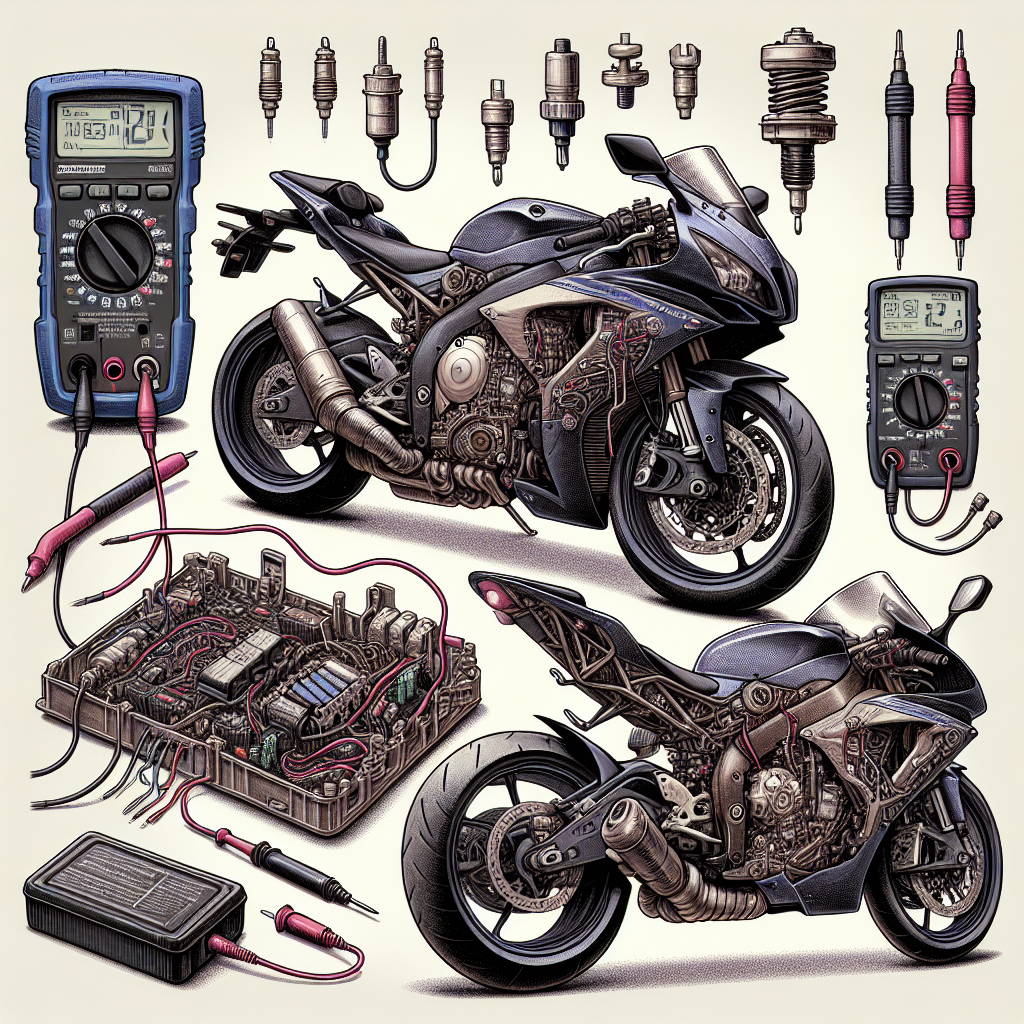
Introduction to the Electrical System Troubleshooting Guide
Welcome to the comprehensive guide to troubleshooting electrical systems for Yamaha YZF-R motorcycles, including the YZF-R6, YZF-R3, and YZF-R1. Maintaining a healthy electrical system is crucial for ensuring your bike's performance and reliability. This guide emphasizes safety precautions and strictly following manufacturer guidelines in all troubleshooting steps.
Common Electrical Issues and Symptoms
Understanding the common electrical problems and their symptoms can significantly aid in diagnosing and resolving issues. Here are some typical issues:
- Battery Drainage: Lights or accessories left on, leading to a dead battery.
- Electrical Wiring Faults: Intermittent or complete power loss due to damaged or loose wiring.
- Charging System Failures: Dead battery or electrical power loss while riding, often due to alternator or voltage regulator issues.
- Ignition System Issues: Failure to start or intermittent firing due to faulty ignition components.
- Malfunctioning or Burnt-Out Bulbs: Indicators and headlights not functioning.
- Inconsistent Electronics Operation: Instrument panel or indicators working sporadically.
- Fuse Blowouts: Caused by wiring faults or component failures.
Troubleshooting Preparation
Before beginning any troubleshooting, gather the necessary tools and equipment:
- Multimeter
- Diagnostic Tool
- Wire Tester
Ensure you have a clean, well-lit workspace to safely work on your motorcycle.
Visual Inspection
Step-by-Step Guide:
- Inspect Wiring: Look for abrasions, pinching, or fraying in the wiring harness, especially in areas with significant movement, such as near the handlebars or under the seat.
- Check Connectors: Ensure all connectors are securely plugged in and free of corrosion or damage.
- Battery Terminals: Verify that the battery terminals are clean and tightly connected.
Battery and Charging System Inspection
Instructions:
- Test Battery Voltage and Current: Use a multimeter to check the battery's voltage and current. Ensure it is fully charged and can hold a charge.
- Check Parasitic Drain: Measure the current draw when the bike is off to identify any unusual drains.
- Evaluate Charging System:
- Alternator: Check for proper voltage output.
- Rectifier and Voltage Regulator: Test their operation to ensure the battery is being charged properly while the bike is running.
Wiring Harness and Connections
Guidance:
- Inspect for Damage: Look for signs of wear, cuts, or pinches in the wiring harness.
- Test Connections: Use a wire tester to check the integrity of connections and identify any loose or faulty wires.
Fuse and Relay Check
Procedure:
- Locate Fuses and Relays: Identify the fuse box and relay locations on your motorcycle.
- Check Fuses: Inspect each fuse for damage and replace any that are blown.
- Test Relays: Ensure relays are functioning correctly and replace any that are faulty.
Testing Electrical Components
Step-by-Step Process:
- Lights and Indicators: Use a multimeter to test the functionality of headlights, tail lights, and indicators.
- Instrument Panel: Confirm that the instrument panel is receiving power and displaying information correctly.
- Ignition System: Test ignition components, such as coils and spark plugs, for proper operation.
Diagnostic Tool Utilization
Introduction:
For more complex issues, using a diagnostic tool specific to YZF-R models can help identify faults within the electronic control unit (ECU) or other advanced systems.
Case Studies and Examples
YZF-R6:
A recurrent battery drainage issue was traced back to an aftermarket accessory wired directly to the battery. After isolating and removing the accessory, the battery's performance returned to normal.
YZF-R3:
Intermittent power loss to the instrument panel and indicators was resolved by identifying a frayed wire in the wiring harness. The wiring was repaired, and protective sheathing was added.
YZF-R1:
Repeated bulb burnouts led to the discovery of a grounding issue. After cleaning and securing the grounding point, all electrical components operated without issue.
Conclusion and Recommendations
Maintaining a healthy electrical system is vital for the performance and reliability of your YZF-R motorcycle. Regular inspections and thorough troubleshooting can prevent and resolve issues before they become severe. Always prioritize safety, and consult a professional if the troubleshooting process becomes too complex.
FAQ
Q1. What should I do if my battery keeps draining?
A1. Check for any lights or accessories left on, and inspect for parasitic drains using a multimeter.
Q2. How often should I inspect the wiring harness?
A2. Regularly inspect the wiring harness during routine maintenance, particularly before long rides.
Q3. What is the best way to test my bike's charging system?
A3. Use a multimeter to check the alternator, rectifier, and voltage regulator for proper operation while the bike is running.
Q4. Can I use a generic diagnostic tool for my YZF-R model?
A4. It is recommended to use a diagnostic tool specific to YZF-R models for accurate fault identification within the ECU and other advanced systems.
Q5. How can I prevent electrical issues in the future?
A5. Regularly inspect and maintain your bike's electrical system, and avoid installing aftermarket accessories without proper knowledge of their impact on the electrical system.

